I’ve long been fascinated by the ancient square rig. It has been widely acclaimed for its downwind and reaching ability, but the traditional sails were often poor working upwind and required extensive rigging to do so. I wanted to experience what it was like to use the rig, and also to improve on its effectiveness using modern materials and aerodynamic theory. I built several square rigs for canoes and my peapod, and those results were rewarding. Mike moved his weight aft to steer downwind. A bit of belly or camber in the sail increases its stability, so he has pulled it up against the mast and the clews farther astern, curving the fiberglass batten sewn into the foot.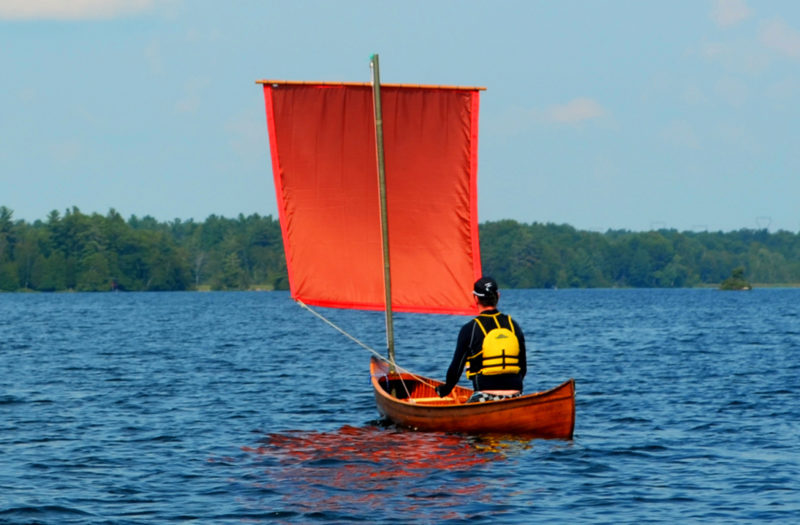 Bob Cavenagh
Bob Cavenagh
Join The Conversation
We welcome your comments about this article. If you’d like to include a photo or a video with your comment, please email the file or link.
Comments (16)
Comments are closed.
Stay On Course

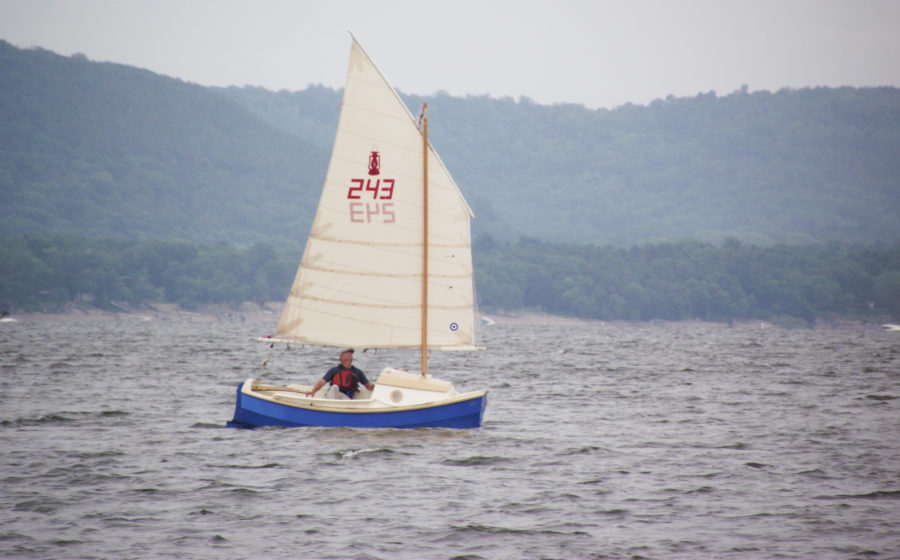
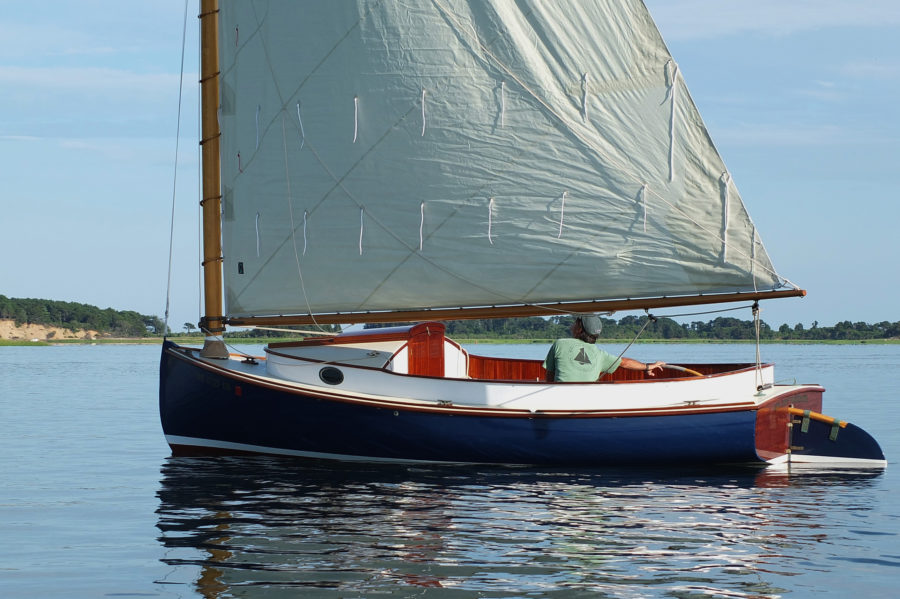
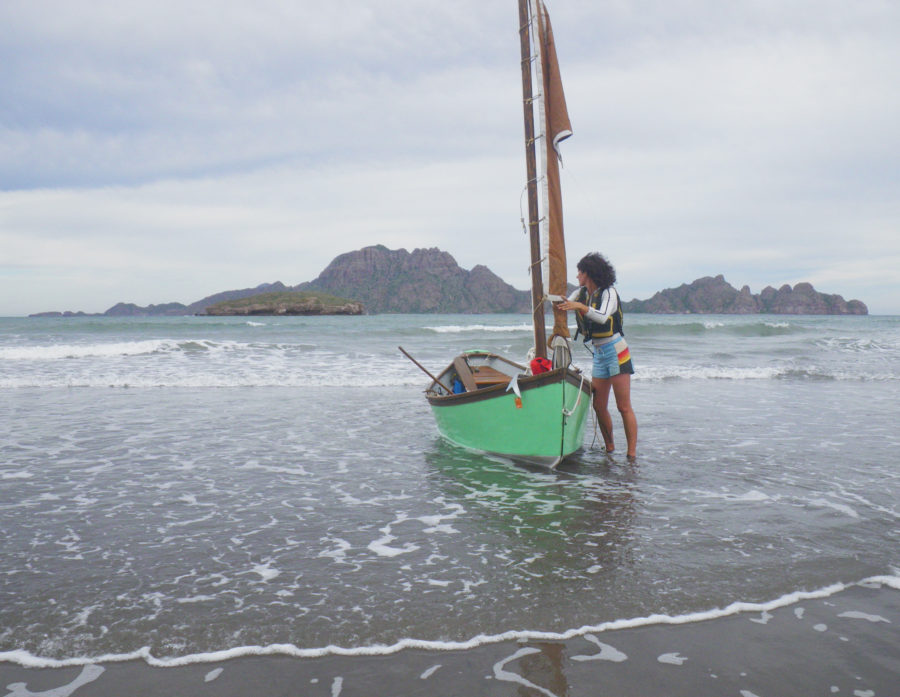
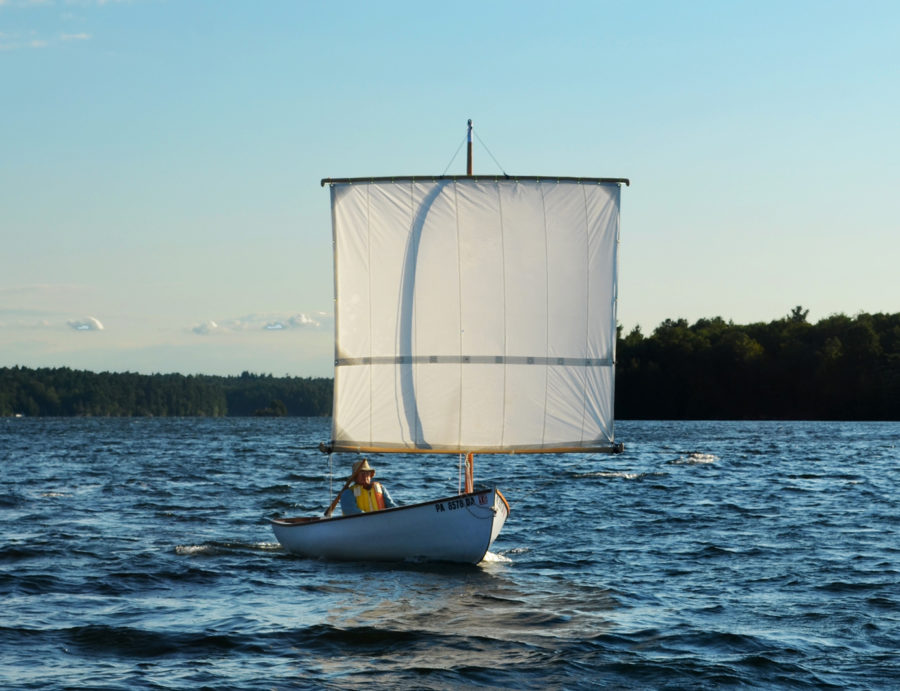
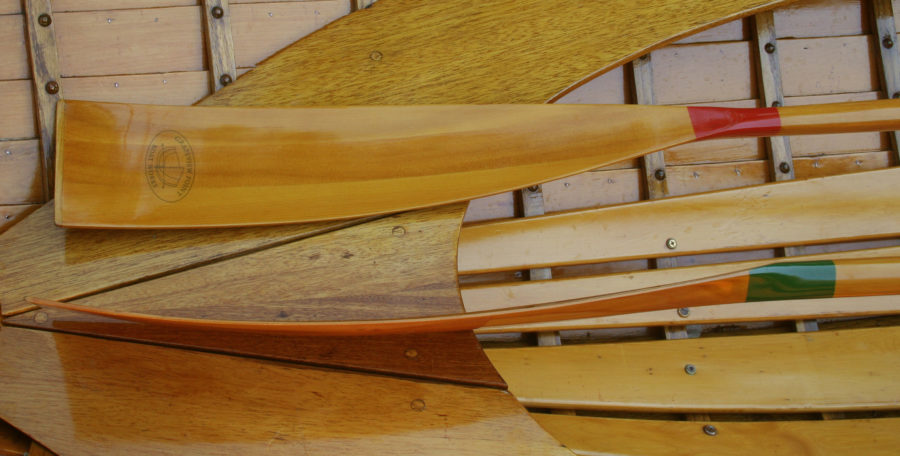
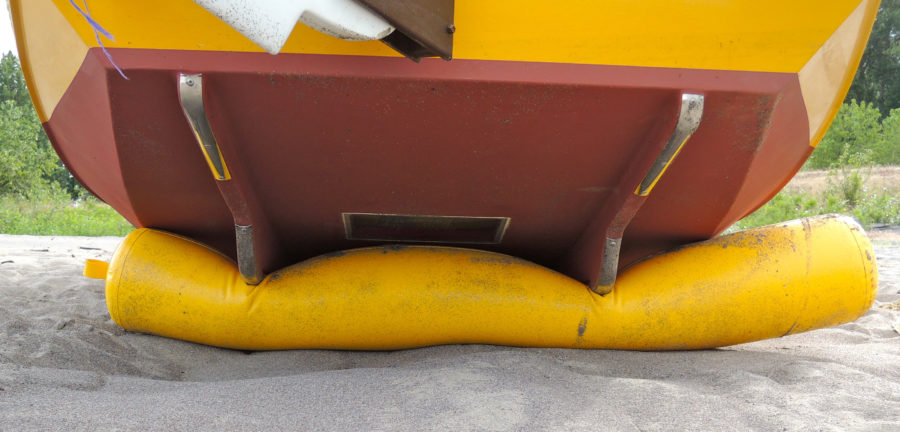
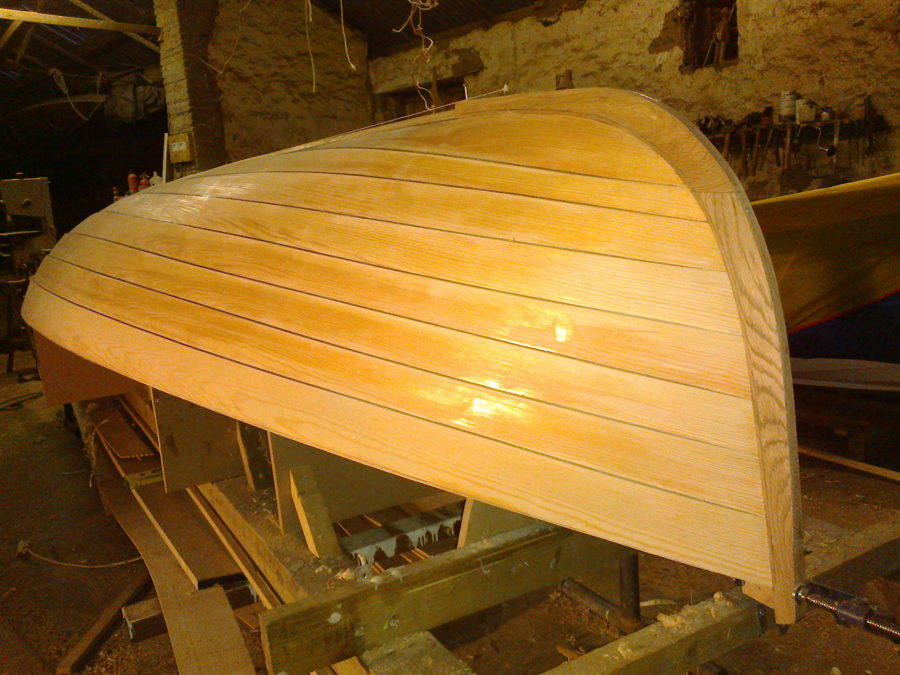
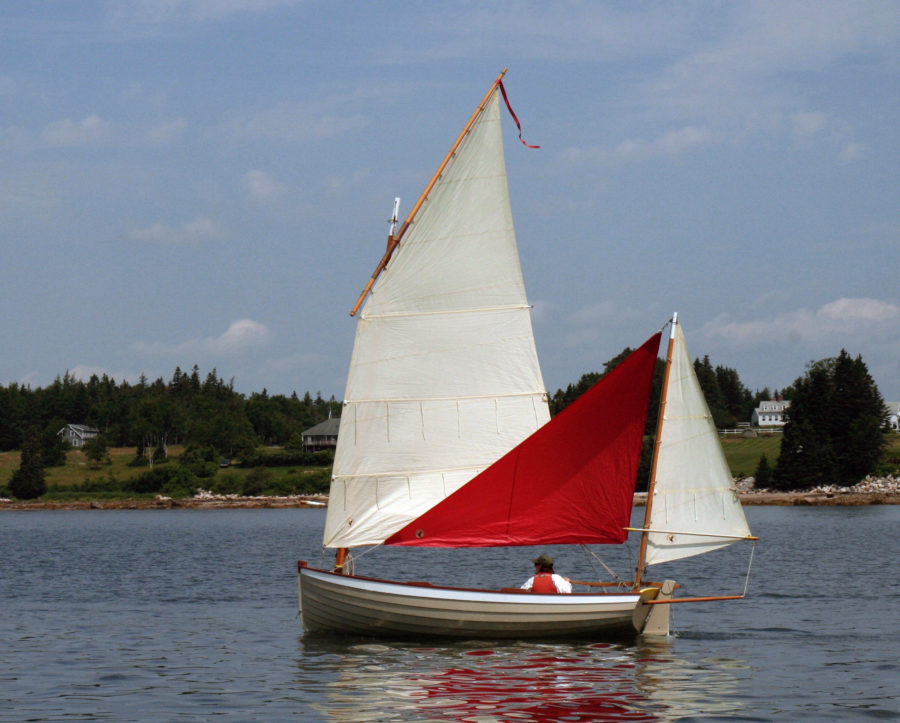
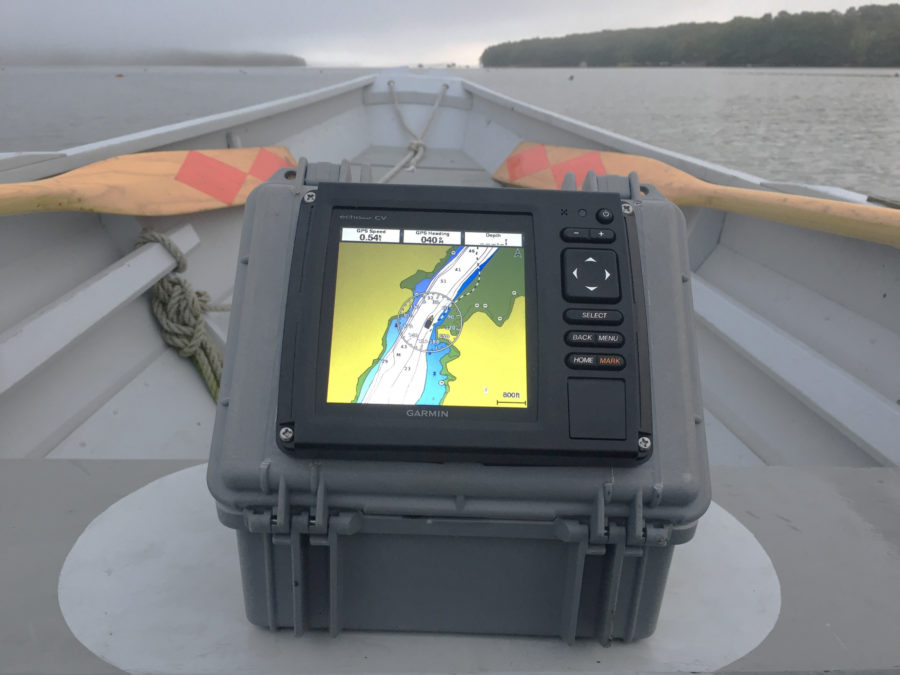
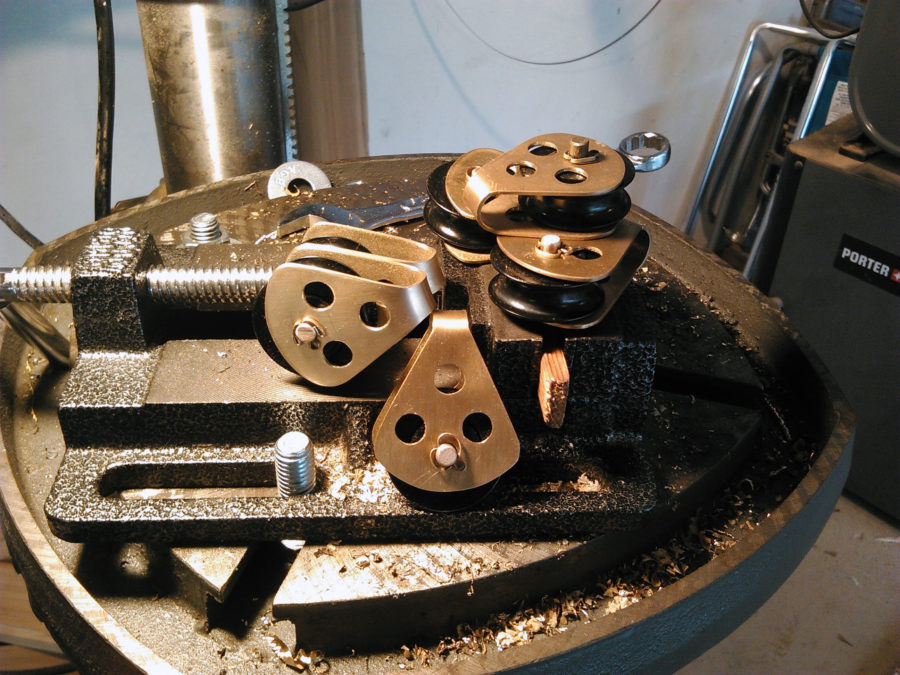
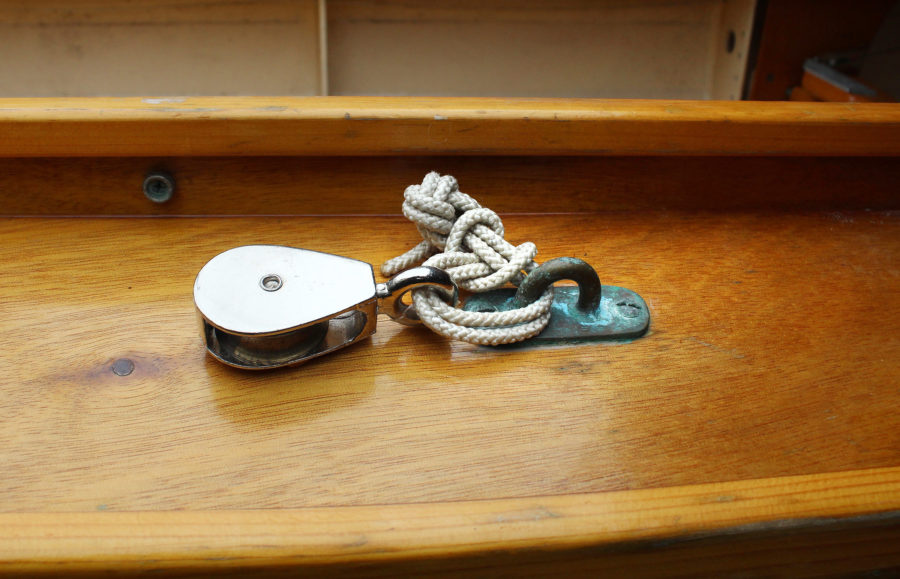
Lovely idea, sailing down the lake with a shower curtain. I was just thinking of making my own lug sail for my Oughtred Sea Hen and this helps a great deal. Thanks.
Thanks for this, Bob. I have been sailing a bit in a lug-rigged ketch and reading Spritsails and Lugsails by John Leather and have a mind to experiment myself. Your article and drawing are very interesting and timely. I wonder if you could have reefed it down enough to sail in St. Michaels today!
(Editor’s note: Bob would have enjoyed attending the Mid-Atlantic Small Craft Festival at the Chesapeake Bay Maritime Museum in St. Michaels this weekend, but the event was cancelled as the approach of Hurricane Joaquin brought high winds. At the time of writing, Friday afternoon, the museum’s phone lines are down and heavy rains have put the St. Michaels area on a flood watch.)
Very interesting article, Bob. I am presently building a 14’6″ Viking vessel and have been looking for the perfect looking sail. My first inclination was to develop a balanced lug sail If you get a chance take a look at my blog and tell me what you would do.
That is a nice looking, fascinating and substantial project. In addition to the weighted shallow keel you have added a centerboard. That could help working to windward and reaching, but I haven’t figured out the relative mast location, which will be important. The square sprit sail in the Swedish plan looks right, but since you want a Viking look, that would suggest a square rig perhaps twice as wide as the hull. Unfortunately that would be a low aspect sail and subject to drag when sailing upwind. A more moderate square rig, similar to the one I used for ROSE-the-Riff could work pretty well, since it can convert to a lug format and perhaps work better upwind. At a guess, I’d think you could use 80-100 square feet of sail.
A problem with scaling a Viking longship down is that everything can be reduced in size except the crew, and sheet leads thus can become difficult. I’ll bet you have watched the video, “Sailing the Test Boats for Draken Harald Hårfagre.” If not, do, and watch the performance of flatter and fatter sails on different points.
Bob,
The square that I have on my Afjordsfaering is pretty high-aspect ratio. The yard is barely wider than the boat. And the larger 19th-century Norse boats have the same kind of rig. I wonder how that evolved. Mine, of course, has the bowline that runs to the stem and a sail stick onto which the sheet and tack is made fast. This rigging does require two people to sail the boat. It might be interesting to rig a boom for it and see what it does when sailed lug-like.
Hello Ben. The boom proved to be a real game changer. With a modern 4:1 tackle to tension the leading edge, upwind behavior became very gratifying. Downwind, the tackle relieves much of the pressure on the sheets, but as noted below it does require some attention in a sudden gust. With your larger hull, you could probably drop the boom for strictly downwind work.
My sail is cut to perform as a lug.
Does the high-aspect ration require braces to the head of your sail? I am working up a higher aspect sail to try on my tin canoe at Cedar Key in March.
Innovative as ever, Bob, and what lovely testing ground. You’ve gone a far fetch further than the Norse: It appears they reefed by twisting the two clews together to reduce sail.
Just to prove that Bob channels the wisdom of the ancients, I submit this article about a square rig for canoes from 110+ years ago. The author, E.T.Keyser, used stock Rushton canoe hardware but most interesting is the way the mast is added and supported. I’d actually run the mast tackle shown in the article a little differently to get at least a 2:1 advantage.
That is another classically beautiful Cheap Pages reproduction, Craig. I read it 2-3 times while working up the project. Thanks!
Fascinating. I hadn’t guessed that a square sail could be that versatile.
Bob, very interesting, thank you. I like the idea of the off-the-wind square rig, but I puzzled: How do you de-power quickly? With a lug rig, or indeed any asymmetric, unstayed rig, you can just let go of the mainsheet. But with equal pressure of the wind on both sides of the sail, I presume this doesn’t work?
There are different solutions for the two sails. The foot of the “tanbark” canoe sail is held only by the two sheets, so when headed downwind you can ease both to let the sail rise and spill air or make the faster and more radical solution: letting go of one sheet and hauling the other aft. These options quickly become instinctive.
Since the big sail on Rose is tethered to the deck by the downhaul you can release and ease the downhaul, again letting the sail rise. With a 4:1 tackle involved, that may take too long in a violent gust, in which case you release one sheet and haul the other aft rather smartly, spilling air. At that point you can either drop the sail, tie in a reef, or, gust past, you can power it up again.
Of course, in lug modes, you treat either sail like any other lug.
Thanks, I think I’ll avoid a central downhaul in that case!
I’m playing with the idea of a boomless square sail that can switch on the fly from square to a dipping lug for my Clint Chase Drake. I’d have a double sheet in each lower corner. One would be a conventional sheet, the other would run forward to a ring on the gunwale, and back to my hands: hauling on this would bring the forward corner of the sail to the gunwale, and in doing so tilt the yard from horizontal. (I think that would make that ‘sheet’ a ‘tack-line’?). I might put a cam cleat to hold the tack line. I think the ‘double sheet’ would work best as a continuous loop: tack line from the corner of the sail, through the ring on gunwale, back to hands, plenty of slack and then the same line goes back to the corner of the sail as the sheet. There’d need to be enough slack to let the sail fly if one let go.
This would create a shape and set up similar to a dipping lug, which would presumably be pretty powerful across the wind. To jibe, I’d slacken off the tack line while pulling on the other sheet, this would put the sail at right angles to the centerline, then continuing to pull would put the sail back in the dipped position on the other ‘tack’.
I still need to measure things up and see if this might work outside of my head! I imagine this set up would work best as a truncated pyramid rather than actually a square.
I can’t imagine I’m the first person to think of this?
By all means give it a try. You will be approximating the “bowlines” used on historic square rigs—lines from the luff of the sail to points forward. This will indeed approximate a dipping lug.
The article describes just two of the square-rig variations I have tried. If you scroll back up to the second canoe picture, you will see the sail functioning as a standing lug. In one variation, I placed a dowel through the mast a bit below the tack location in the picture. I could then hook the forward sheet under it (using a paddle), pull the tack down strongly, and thus improve upwind performance.
You don’t mention using a lower spar. That spar on ROSE is the key to achieving windward performance, as my downhaul can tension it anywhere from the middle of the spar (for downwind) to near the tack, achieving the luff tension needed for upwind work. That spar also lets me control the shape of the foot of the sail. Without it, it can be hard to flatten the sail aft. The sheet tension on the small canoe sail can be quite high. The downhaul transfers much of the thrust of the lower half of the sail to the hull.
I don’t find the gradual and urgent techniques to spill air from the sail to be onerous.
Bob
Thanks a lot for sharing an excellent development. I’m presently working on my own design of 42′ sail boat. I would love to apply your idea plus some roiling reefing solution. Similar like in Paradox boat. I would appreciate any comments.
Best of luck with the project. I’ve been intrigued by Matt Leyden’s hull and rig designs. The latter reminds me of some older Vietnamese rigs (see the Junk Blue Book, with a more primitive roller arrangement.
I am not sure how well those rigs go to weather. In some ways they seem similar to crab claw sails, but without the tapered point at the tack.
My next square rig will be for a canoe, and it will have higher aspect ratio.
Bob